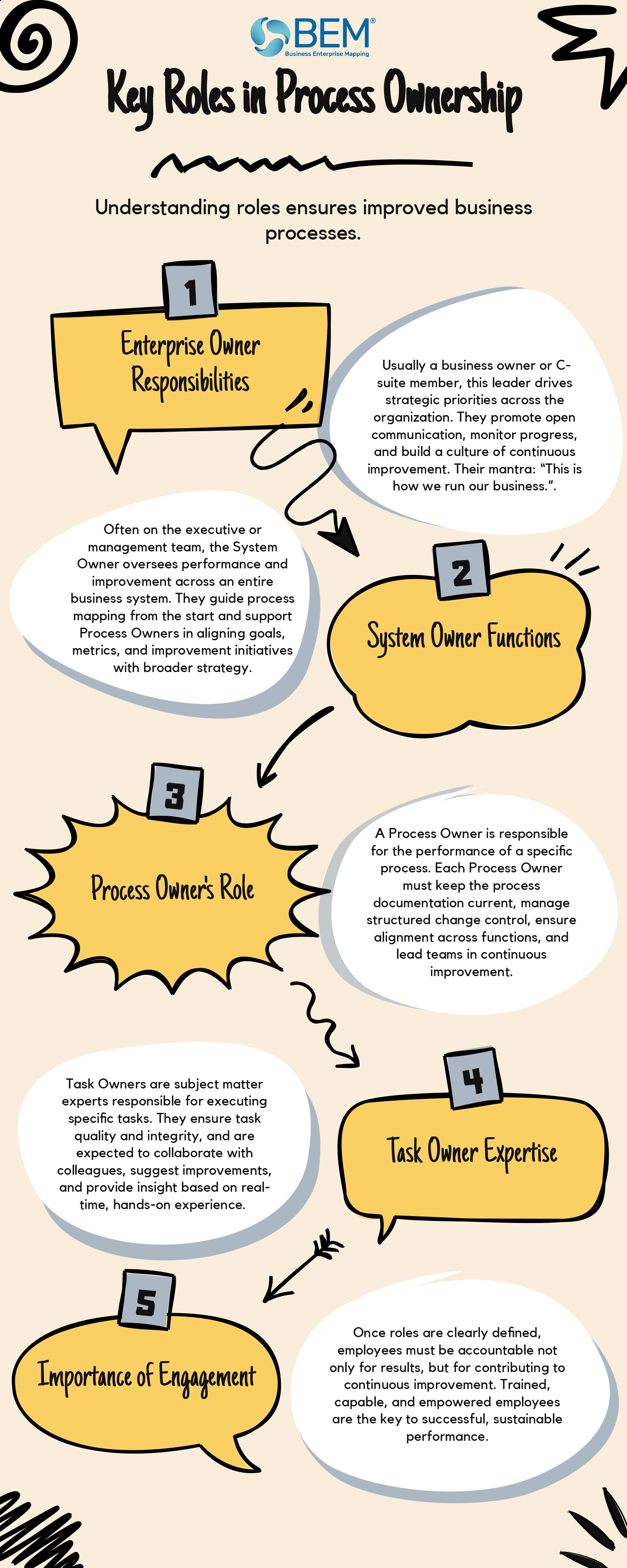Are you getting the most from your organization’s process mapping efforts? Many analysts create process maps based on employee interviews, then return to their desks to draw what they think the process looks like. This approach misses a huge opportunity—engaging employees in mapping their own processes.
At Business Enterprise Mapping (BEM), we believe the best way to map processes is to involve the people who do the work. Using our proprietary Perigon Method, we engage employees at all levels in workshops and discussions. Their feedback shapes the process, and their involvement drives results.
We believe this method boosts engagement while delivering real value to the organization. Here’s why.
Process Mapping Gives Work Purpose
Employees want their work to matter. Many engagement initiatives fail because they don’t address meaningful problems, leaving employees feeling unheard and undervalued.
Including employees in process mapping changes that. It shows their work is important, gives them a voice in shaping solutions, and helps them see how their role fits into the bigger picture. That clarity builds purpose and commitment.
It Encourages Story Sharing
For many employees, our workshops are the first time they’ve had a chance to explain how they do their job. They’re encouraged to walk through the process from beginning to end, which sparks conversations about how to improve efficiency and outcomes.
This storytelling creates engagement. Employees feel seen, heard, and respected for their expertise—key drivers of satisfaction and motivation.
It Breaks Down Barriers and Builds Teams
Departments often operate in silos, with limited communication outside of leadership. But processes typically cross boundaries—moving from supplier to task to customer. That’s where process mapping excels.
Mapping reveals where handoffs break down. It encourages collaboration across teams, often forming new cross-functional groups to implement improvements. People who might never have worked together unite around a shared goal, strengthening teamwork and trust.
It Builds Skills
Every project delivers an “aha” moment: when employees begin to understand how process thinking can improve performance. With training in process-based management, analysis tools, data gathering, and deployment, they gain valuable skills they’ll carry throughout their careers.
When employees help shape how their work is done, they become more motivated and invested. Process mapping becomes not just an analytical tool—but a powerful vehicle for long-term engagement, satisfaction, and performance.
What Process Ownership Means
High-performing organizations define clear accountability at both the system and process level. This empowers active management and continuous improvement. Ownership should align with actual workflows—not titles or hierarchy. For example, the president might own the Strategic Management Process, while a warehouse clerk owns the Receiving Process.
Implementing Strategic Process Management (SPM) may require adjusting reporting lines to empower Process Owners. At a minimum, roles must be clearly defined, and owners should be equipped to manage performance and respond to feedback.
In advanced environments, the org chart itself evolves—structured around business systems rather than departments. Employees are grouped by skills and responsibilities. In some organizations, “Process Owner” becomes a formal title or recognized role.
HR Alignment and Organizational Impact
Shifting to a workflow-based structure affects performance management. HR must adapt evaluation systems to incorporate process participation and ownership. Reward structures should reflect contributions to process improvement, not just job tasks.
Key Roles in Process Ownership
Enterprise Owner
Usually a business owner or C-suite member, this leader drives strategic priorities across the organization. They promote open communication, monitor progress, and build a culture of continuous improvement. Their mantra: “This is how we run our business.”
System Owner
Often on the executive or management team, the System Owner oversees performance and improvement across an entire business system. They guide process mapping from the start and support Process Owners in aligning goals, metrics, and improvement initiatives with broader strategy.
Process Owner
A Process Owner is responsible for the performance of a specific process. This role doesn’t require a supervisory title—just leadership skills, process knowledge, and the ability to communicate and collaborate.
Each Process Owner must:
- Keep the process map and supporting materials current.
- Manage structured change control.
- Ensure alignment across functions.
- Lead teams in continuous improvement.
A designated Process Lieutenant should be trained alongside the owner to ensure continuity.
Strong Process Owners exhibit:
- Flexibility: Open to sharing and receiving feedback.
- Technical Knowledge: Deep process understanding and ability to educate others.
- Commitment: Dedicated to implementing improvements and maintaining standards.
- Engagement: Active in presenting process status and opportunities to leadership.
They also represent their processes during audits and serve as key points of contact for improvement efforts.
Task Owner
Task Owners are subject matter experts responsible for executing specific tasks. They ensure task quality and integrity, and are marked on the process map. Task Owners are expected to:
- Collaborate with colleagues.
- Suggest improvements.
- Provide insight based on real-time, hands-on experience.
Employees with specialized knowledge—particularly in compliance or risk—should be engaged in this role or as consultants.
Engagement Drives Responsibility and Accountability
Once roles are clearly defined, employees must be accountable not only for results, but for contributing to continuous improvement. Trained, capable, and empowered employees are the key to successful, sustainable performance.

Let me know if you'd like a version formatted for publishing (blog, article, internal guide, etc.) or need this tailored to a specific audience!

